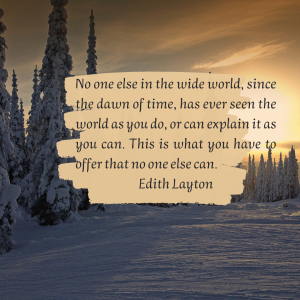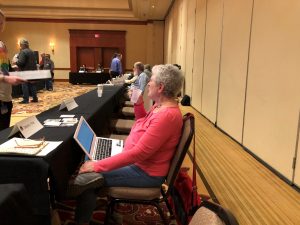Hot cross buns are being promoted all over the place right now, which means that Easter looms. I say ‘looms’ because Easter holds an amount of darkness for me. My family mostly doesn’t talk about it, but it is the moment when my family was told by its patriarch to flee. “Children, run!” he said (but in Yiddish).
I think it’s time we talked about this.
My great-great-grandfather was one of the 500 people hurt (with intent, with malice, with much antisemitism) in the Kishinev pogrom. I don’t know what other damage was done to the family. All I know about it was that he was hurt and saw the writing on the wall for Jews in his home town and that he told his children to run.
The anniversary this year is just before Easter. The pogrom was intentionally during Easter. It’s an historical thing in the Christian world, to hurt Jews on Christian festivals. This is why I strongly suggest that those who want Jews to have Christmas trees or eat hot cross buns should not press it if they meet “I don’t do this things”. You may be touching on hurtful ground if you’re talking to someone who still has that memory of the pain. Also, do not ask us, “Do you remember exactly how your family got hurt on Easter/Christmas?” I’m telling you here, about my family. Let the story of how my family fled across the world because it was unsafe to be home, during Easter save other Jews from that question.
The blood libel played a part in the pogrom, but it was a lot more than that. Nearly half of Kishinev was Jewish, so it wasn’t a small minority being hated by the majority. It was literally people saying, “Let us destroy half our neighbours.”
The blood libel was an excuse. False accusations of murder of a Christian child.
As I interpret it, the pogrom was organised with the help of a newspaper and in a somewhat similar way to the January 6 event in the modern US. I’m reliant on translations and everything hurts to read, because my family was damaged. So… I suggest you read about it. I’ll have links shortly, and one of those links leads to a book on the subject. One day I must obtain that book and read it and understand … today is not that day.
Ironically, the first time I heard about the whole linking of Jews to blood thing was during Passover (near Easter, but that year, not quite the same days) when I was in primary school. I’d brought extra unleavened bread into school because some other children like to try things and assuaging curiosity has been, for me, a good way of reducing the antisemitism.
One child shouted at me, “I can’t eat that, it’s got the blood of babies in it.” I tried explaining kashruth because if one understands kashruth then one understands just how offensive the ‘Jews drink the blood of babies’ statement is. It goes against so much of who we are. That didn’t help
The next day, I brought the rest of the box of matzah in and ask the other child to read the ingredients.
“Flour, water, salt.”
“Which of those is babies’ blood?” I asked. She tentatively nibbled a bit and agreed there was no blood in it and lo, for the rest of primary school I was safe from that particular accusation. To replace the blood of babies, the group she mixed in all decided that I had personally killed Jesus. At age nine. They told me so.
Being a science fiction person already, I asked if that meant I invented a time machine. They were flummoxed and refused to let me play with them. I was flummoxed and started dreaming of things I could do with a time machine. This is when I knew for a fact history was going to be part of my future. And that murdering people was not something I wanted to do. Ever.
Anyhow, back to the 1903 pogrom that destroyed my family’s very middle class life in a major city on the other side of the world…
Here’s a summary. I chose this one because the man in the white hat in the top picture, looks very like one of my uncles: https://www.timesofisrael.com/how-a-small-pogrom-in-russia-changed-the-course-of-history/
It was important historically, as this article suggests. Japan had already begun its road into imperialism, but the inefficacy of the Russian leaders in preventing the pogrom led it to think about the rules of war in unexpected ways. To me, this also suggests that Pearl Harbour was part of a pattern: https://besacenter.org/kishinev-pogrom-russia-japan/
Why am I talking about it now? Because I offered to answer questions about antisemitism in a couple of for a now that it’s getting bad again. I want to do my bit to make it hurt less.
This is why.
I am mostly of refugee descent. At the heart of the way I view the world is always being told that I’m an outsider, that I don’t have full human rights, that I don’t belong.
This has taught me that I need to be public about antisemitism. I need to talk with people about it, even if it gives me pain.
If someone says they hurt because of prejudice, listen to them and hear what they’re saying. Then do some homework before explaining things back to them, trying to solve problems, or telling them someone else hurts more. All of today’s post is about the reason just one branch of my family fled. It’s fine to take learning about these things one step at a time. What is not fine is ignoring or explaining back or assuming we are at fault for the bigotry of others.
This whole post was triggered by it being Easter soon, and by someone telling me that I hadn’t factored in other bigotry when I was specifically talking about antisemitism.
It’s one of those years. I’ve had them before, but… they exhaust me on so many levels. Be gentle to anyone from a minority background. Jews are the canary in the bigotry coalmine. If we’re hurting, you can guarantee the bigots are out in force and attacking other people as well. If you can’t think of anything you can do that will help, try listening. Listening and hearing are such big gifts.



 Somewhere fairly recently I was in a conversation with someone (can you tell I cannot for the life of me remember when, or with whom, the conversation occurred?) about the why of writing. The person I was talking with spoke pretty definitively about why writers write, and while her points (I can remember it was a woman I was speaking with, maybe by the time I finish this post I’ll remember her name) were valid, I thought they were also limited. As if she could not imagine reasons to write that were not hers. Which is the crux of why I write. I’m trying to figure out why people do what they do. It’s why I read, too: to understand.
Somewhere fairly recently I was in a conversation with someone (can you tell I cannot for the life of me remember when, or with whom, the conversation occurred?) about the why of writing. The person I was talking with spoke pretty definitively about why writers write, and while her points (I can remember it was a woman I was speaking with, maybe by the time I finish this post I’ll remember her name) were valid, I thought they were also limited. As if she could not imagine reasons to write that were not hers. Which is the crux of why I write. I’m trying to figure out why people do what they do. It’s why I read, too: to understand.
 It’s been several years since I’ve gathered with fans and other writers in person. I used to attend local science fiction conventions regularly, but the last one was FogCon (Walnut Creek CA) in February 2020. I find it amusing that my last haircut was in March 2020, although one is not necessarily causative of the other. I attended book signings at local stores and gave presentations at our local branch library. I also organized a monthly lunch and support group with a group of local writers. Needless to say, all these came to a screeching halt with the pandemic, and while some have ventured into in-person conventions, I have not done that yet. I’m in my mid-70s, which in itself increases my risk of serious disease or death, but I feel strongly that no one should ever feel pressured to defend wearing a mask or justify staying away from indoor gatherings. (In my case, there’s the personal risk, plus that my younger daughter spent the final year of her medical residency in Family Medicine taking care of desperately ill and dying Covid patients — this was before vaccines were available — and she is fiercely protective of me.)
It’s been several years since I’ve gathered with fans and other writers in person. I used to attend local science fiction conventions regularly, but the last one was FogCon (Walnut Creek CA) in February 2020. I find it amusing that my last haircut was in March 2020, although one is not necessarily causative of the other. I attended book signings at local stores and gave presentations at our local branch library. I also organized a monthly lunch and support group with a group of local writers. Needless to say, all these came to a screeching halt with the pandemic, and while some have ventured into in-person conventions, I have not done that yet. I’m in my mid-70s, which in itself increases my risk of serious disease or death, but I feel strongly that no one should ever feel pressured to defend wearing a mask or justify staying away from indoor gatherings. (In my case, there’s the personal risk, plus that my younger daughter spent the final year of her medical residency in Family Medicine taking care of desperately ill and dying Covid patients — this was before vaccines were available — and she is fiercely protective of me.)